Estimated reading time: 07 minutes.
September/2014 - Sigma’s Art lenses have been the most anticipated products since the launch of the well regarded 35mm f/1.4 DG HSM. With an innovative build and beautiful restyling, the Global Vision has been conquering the market for its superior image quality and fantastic low price point. The 50mm f/1.4 Art DG is simply the highest optical performance 50mm f/1.4 on the market (the Zeiss is 55mm after all), and with a price tag of only US$949, it’s 1/3 the price of the Otus and 3x the price of Canon’s and Nikon’s f/1.4s: a perfect marketing strategy of a very desirable product with loads of expectations, that will certainly generate loads of buzz. But does it deliver? Let’s find out!

At 815g the f/1.4 DG HSM is by far the heaviest 50mm I’ve ever used, and actually in trend with recent large aperture primes. With larger than life elements and a bigger circle of projection, it’s easier to use just the best portion of the image from corner to corner, also reducing vignetting, although it’s a pain in the ass to carry it around. Some say the Otus 55mm f/1.4 is actually a medium format design adapted for the 135 full frame, and it’s the only 5#mm lens bigger than Sigma’s. But more glass means more costs, and both (Zeiss US$3990, Sigma US$949) are on a different league than Canon’s (US$399) and Nikon’s (US$425), price and size wise.

Said and done: the ease of use is gone as the weight gets really annoying. It balances well on large metal full frame cameras like the D800E or the Canon 1D-X, but it’s too front heavy on a plastic APS-C entry level like an EOS Rebel, a 60/70D, even a D7100. Its build is made of metal around the mount, thermoplastic barrels that doesn’t expand nor are as heavy as metal, all rubberised on the outside. It certainly feels nice in your hands and the grip is nice for everyday use. It is identical to other Art lenses like the 35mm f/1.4, 18-35mm f/1.8 and 24-105mm f/4, for a very stylish kit.
The usability is perfect with a single, large focusing ring, and one A/M switch for the HSM AF. The manual ring is extremely smooth and feels very premium like some Zeiss or vintage Nikkors. It’s well damped and precise, with no play, and a much deeper rubber groove than Canon’s L. And the internal HSM AF, similar to the USM, is silent and precise, although it doesn’t screams speed.

But around the streets I had some issues with the AF reliability even under loads of light, using the D800E center focus point. The Sigma 50mm f/1.4 DG HSM requires more contrast than usual and it’s not always possible to lock focus on any subject. For example, I tried to photograph Buenos Aires’s obelisk (white) against clear skies, and the camera simply couldn’t lock focus… after five attempts! I had to point the camera at a nearby dark building with better contrast for it to work, and it definitely felt weird. I never had this sort of problem with the AF-S f/1.4G.
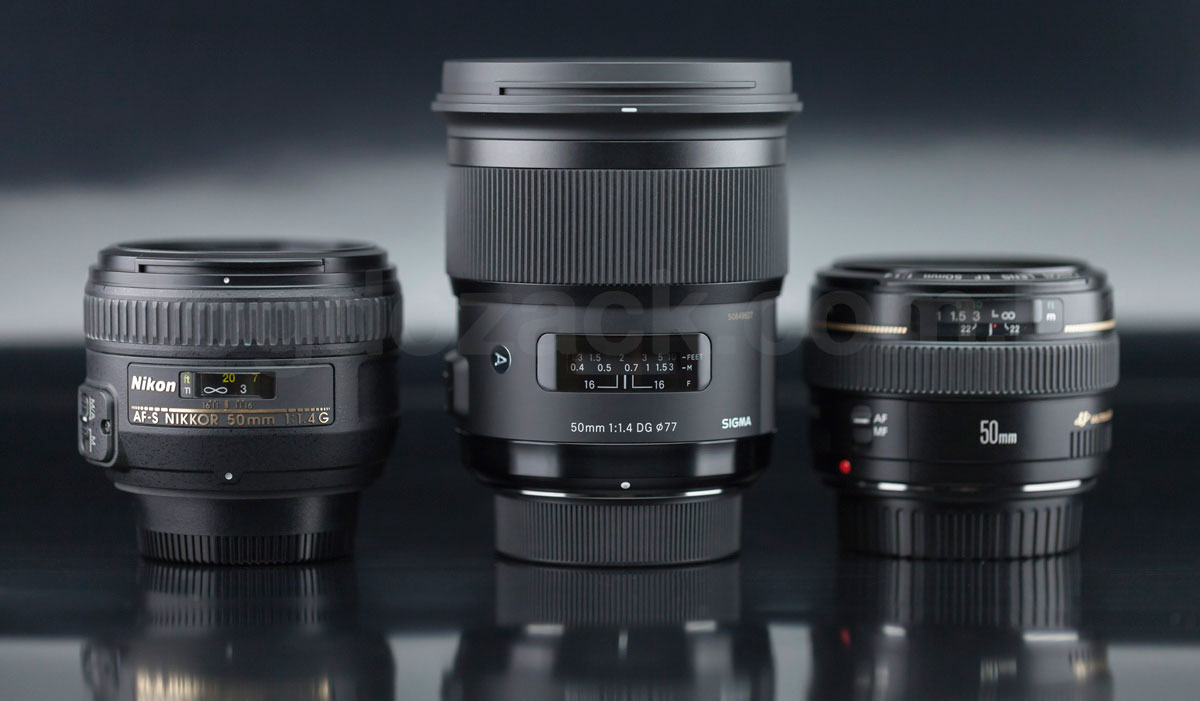
At last the giant front element is surrounded by a ø72mm filter thread that doesn’t rotate, and the included lens hood attaches on its own thread. It all fits inside the also included zipper case that’s the same size as the 24-105mm f/4 DG OS HSM (I told you this 50mm was big), completing the full frame Art series for now. Unfortunately none of them features weather sealing and none share the same filter size. You must purchase a variety of filter sizes, or use a step-down threaded ring.
The reason d’être of a 50mm wide aperture lens is in low-light photography, and the effects of the shallow depth of field. While they are easy and inexpensive to manufacture with good image quality, especially at optimized f/stops (think f/4 and up) anything close to f/2 presents difficult optical challenges. All around resolution and chromatic aberrations on the highlights are complicated to fix. And that is exactly what these new top lenses have tried to solve: the Zeiss with an APO (apochromatic) Otus and Sigma with SLD glasses. All photos with the Nikon D800E.
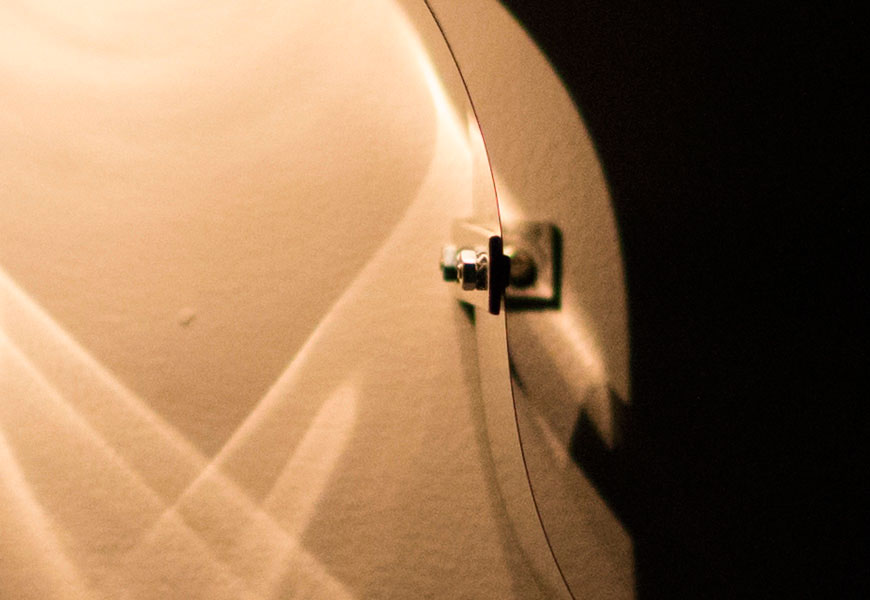
100% crop, complete absence of chromatic aberrations.
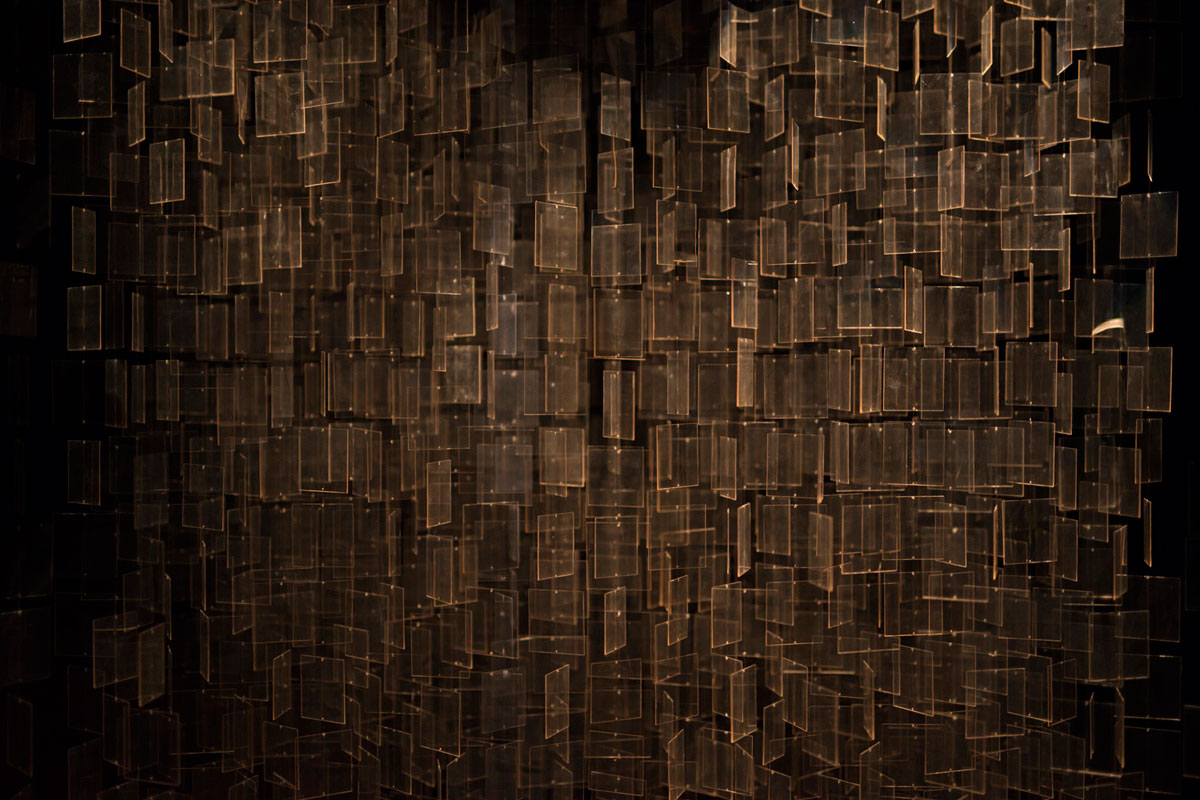
“Lumiére” at f/1.4 1/60 ISO1600; total darkness at the “Le Parc Lumière” exhibition on Museo Malba in Buenos Aires.
There’s no need for well-trained eyes to evaluate the optical performance of the Sigma 50mm f/1.4 DG HSM “Art”. It is simply the best 50mm full frame on the market (the Otus is 55mm) and will stay on my kit with the D800E; I intend to sell Nikon’s and Canon’s 50mm f/1.4 because I cannot go back to those files, and remember that Nikkor was one of my favourites on the AF-S line. But the sharpness, resolution and bokeh of the “Art” are really impressive and “the” lens for those in need of raw image quality output, regardless of aperture and light settings.
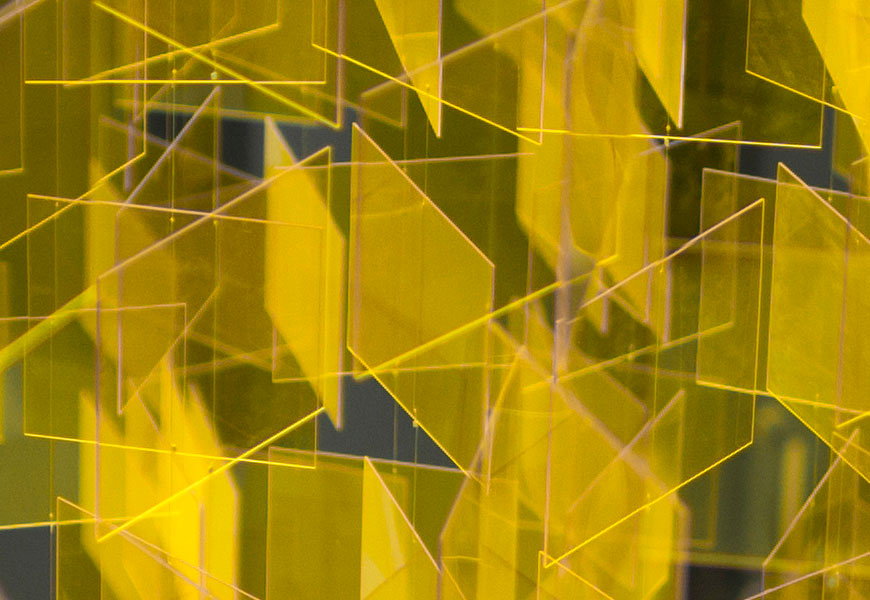
100% crop, resolution and contrast at f/1.4.
At f/1.4 it’s really not as perfect as the US$3990 Otus 55mm f/1.4. But when you put Canon’s 50mm f/1.4 USM and Nikon’s 50mm f/1.4G files side by side, you realize the jump in contrast from the maximum aperture. There’s no denying it: the resolution is impeccable in a very short image plane and clearly reveals details that other lenses simply cannot see. It’s been a while since I could find this level of performance under US$1000 and, I repeat, no 50mm had done this before.
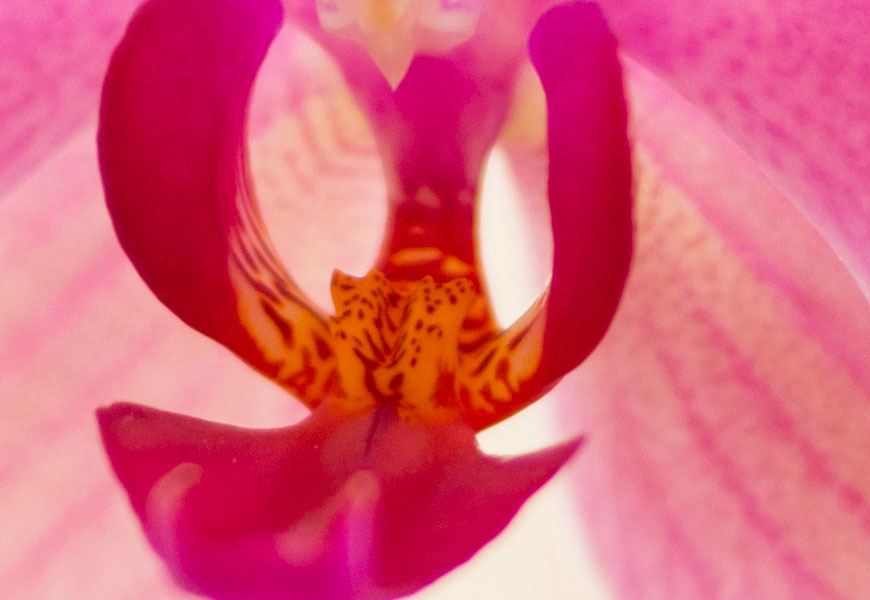
100% crop, wide open details at the center.

100% crop, light blooming on high contrast graphics.
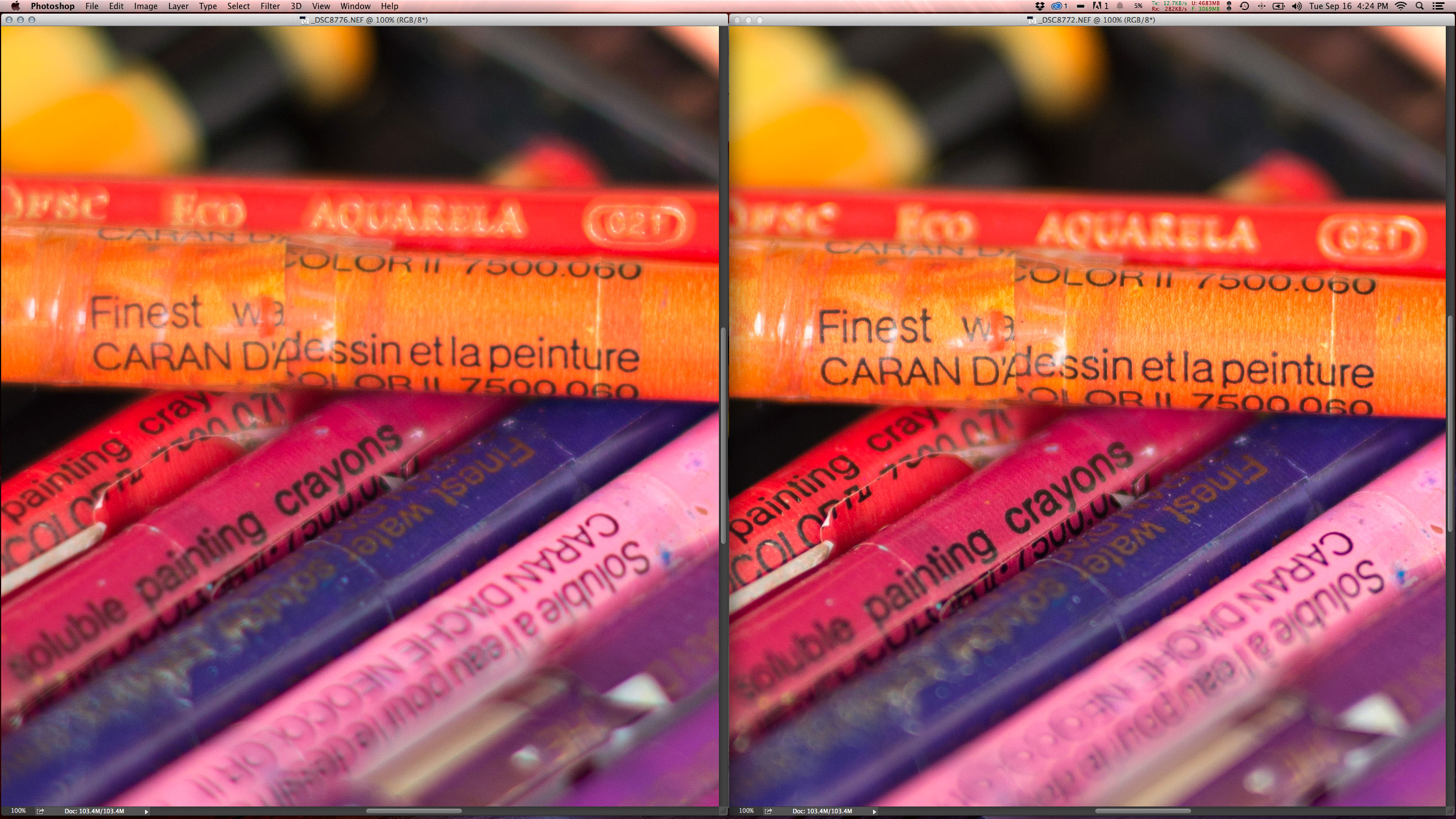
But just put the AF-S 50mm f/1.4G by its side (left) to see how the Sigma is light years ahead in performance.
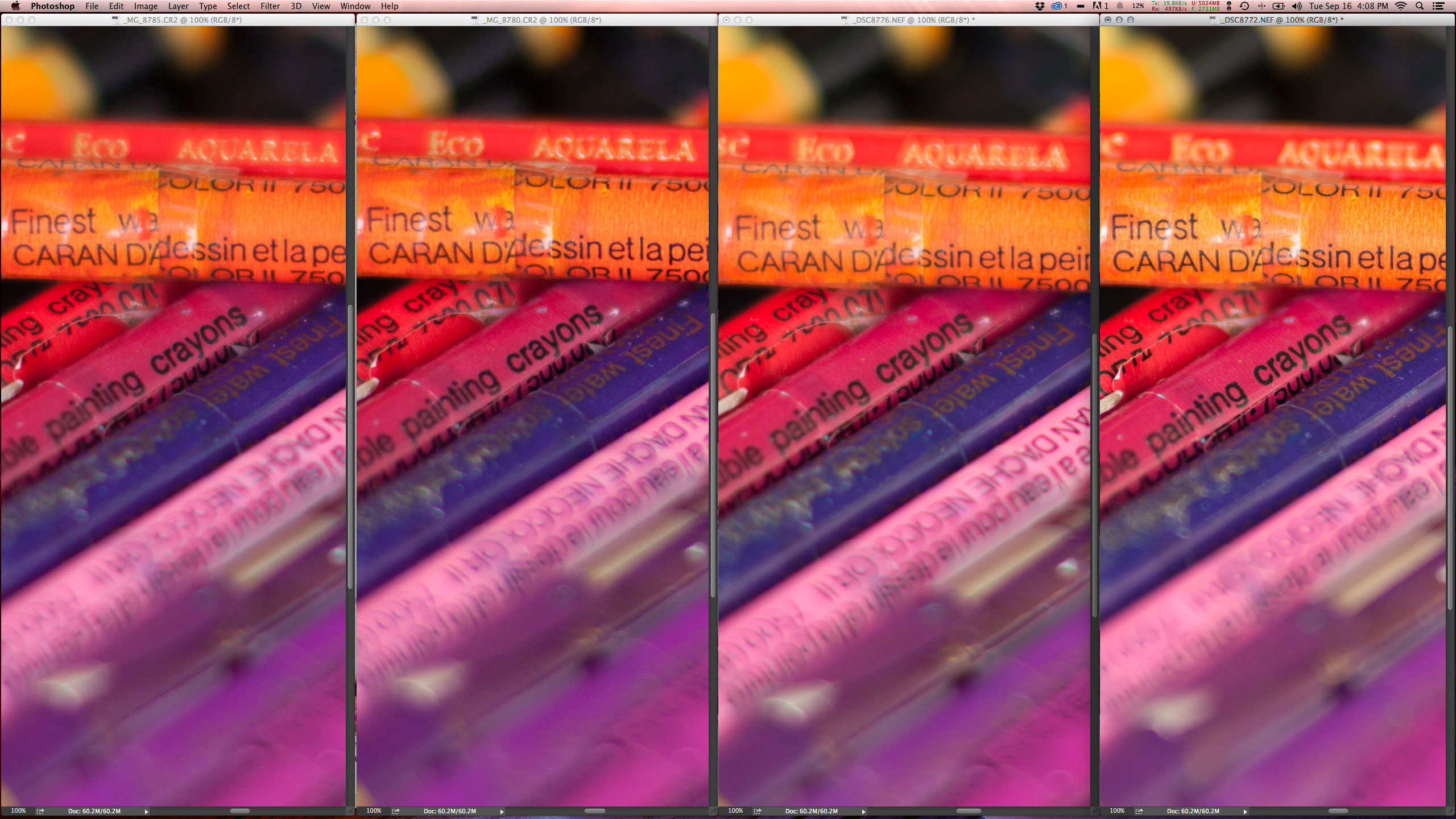
Together with other 50mm lenses at f/1.4, from left to right: Canon EF 50mm f/1.2L USM, Canon EF 50mm f/1.4 USM, Nikon AF-S 50mm f/1.4G and Sigma 50mm f/1.4 DG HSM. Sigma’s sharpness is way higher, without a doubt.
F/1.4 photos are fully usable depending on the lighting situation and only in very specific elements that I would stop it down to f/2. Chromed products and three-dimensional articles, which also call for smaller apertures for increased depth of field. But I’m being meticulous. On the streets, at f/1.4, I did not find problems and on specific tests we see that it is much better than the competition, despite some glitches. It is a new photography philosophy independent of aperture for high quality files, impossible on Canon’s and Nikon’s lenses. We must wait for updated high-end primes.

100% crop, but I’m being very meticulous, the optical flaws are kept to a minimum.

100% crop, impeccable details on the 36MP D800E.

100% crop, the details would have been even sharper had I hold the camera steady.
F/2 and up shows an exponential leap in resolution and contrast I’ve only seen on top telephoto primes like the EF 200mm f/2L IS USM. There is no sign of blooming (light leakage on contrast lines) or loss of resolution at the edges. Lateral CA does not exist on the images and it’s the first time we see this performance on the D800E, which usually enlarges this imperfection. Longitudinal CA is there but updated editing software can eliminate it completely. It is absolutely perfection at this focal length. Vignetting is invisible at f/2 and there’ no geometric distortion to tell a story.

100% crop, car signs at the distance.
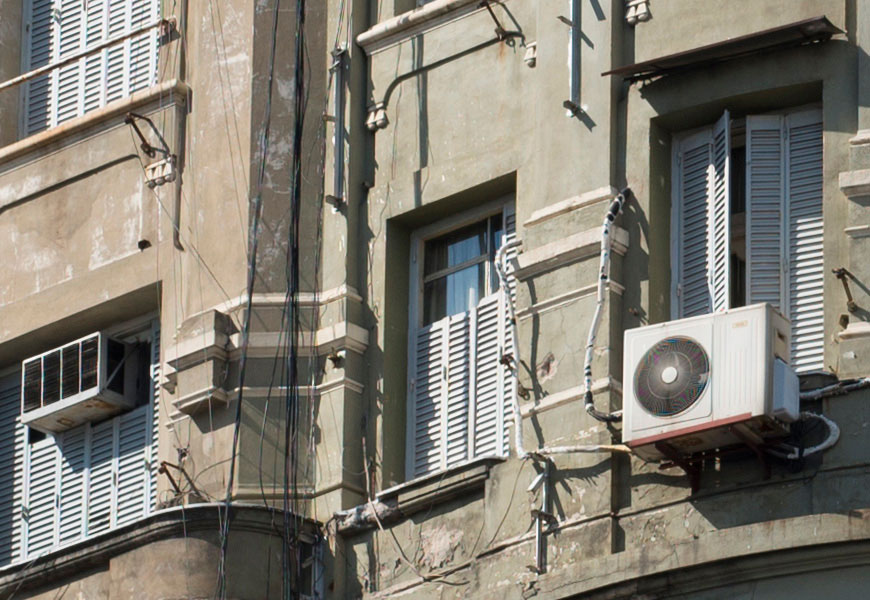
100% crop, immersive details, inevitable moiré.
Stopping the aperture even further we see what the 36MP D800E is really capable of. It’s a new era of high performance primes that marries well with 30MP+ 135 full frame sensors, or 20MP+ APS-C cameras. It’s a tipping point for the photographic technology and it will be hard to swallow future, less than perfect lenses. The files feel tridimensional like larger formats, or even Foveon X3 images. Finally a lens worthy of the “Art” badge, Canon and Nikon better watch out.

100% crop, there’s no software correction applied; lack of chromatic aberration is impressive. O_o
What most third party lenses are behind, especially against Canon, are in color balance and bokeh smoothness (compared to L series). But the Sigma 50mm f/1.4 DG HSM delivers resolution and bokeh that the f/1.2L USM can not. There are no repetitive lines on the background like cheaper lenses, and I’m talking about the f/1.4s; I didn’t waste my time with the f/1.8s. It’s the best of both worlds in one single device, cheaper than the (albeit brighter) higher end Canon L.

100% crop, perfect details wide open.

100% crop, high contrast wide open.
The Sigma 50mm f/1.4 DG HSM “Art” is the best 50mm on the market, period. Tested on the 36MP D800E we can see its high resolution files, much superior the most other f/1.4s, and its almost as good as the US$3990 Zeiss Otus. It is very impressive what Sigma have been doing post Global Vision and their products are becoming very popular even among professionals. Who would have thought we would see a Sigma prime lens around the studio? It’s a near flawless lens for near flawless files. Do yourself a favour and shoot “Art” from now on. Nice shooting!